A Guide for Shoulder Exercise
1. During exercise take a deep breath
- Breathe deeply 4 to 5 times before exercise
- First, breathe out deeply, and then take a breath. Exercise slowly and relax
2. Exercise in a sanding posture - Twisting the shoulders
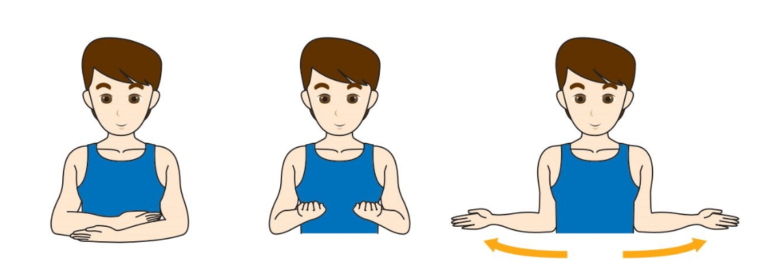
- Bend your elbows to a right angle, and open the arms sideward with the armpits attached to your bod
3. Exercise in a standing posture – Swinging
Caution : Relax the shoulders as much as possible before exercise. Stop the exercise if your symptom is severe.

a. Swing the hand back and forth
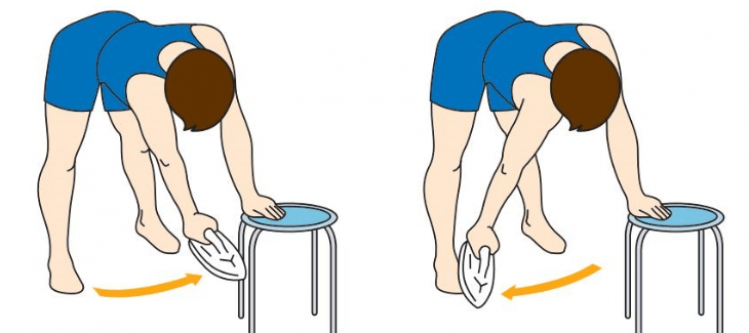
b. Swing the hand right and left

c. Rotate the object changing directions, like the figure in the right
4. Exercise in a standing posture – Pushing a wall
*Step forth a foot and move towards a wall.

a. If you cannot lift the arms up, bend your elbows and touch the hands on the wall in a width of the shoulders, and push the upper part of your body
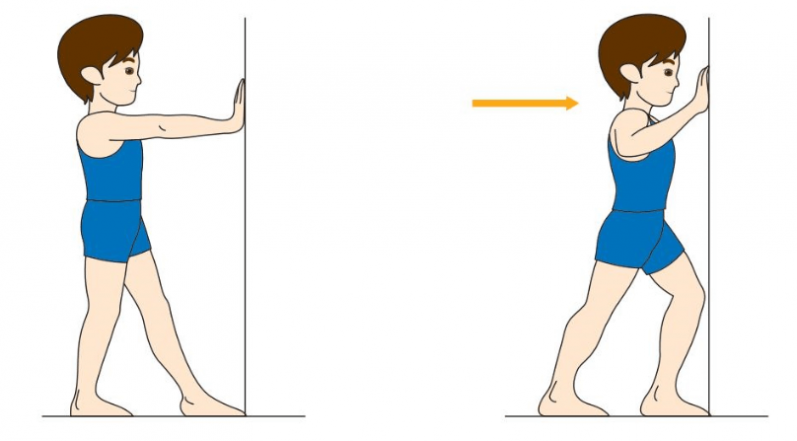
b. When your arms are lifted up, touch your hands on the higher position gradually apart from the wall, and push the upper part of your body
5. Exercise in a standing posture – Using a bar
*Use a bar in your neighborhood
**You can also use a towel in place of bar for exercise no. 01, 02, and 04

a. Hold a bar and widen your arms. Take it down and then raise it up above your head.
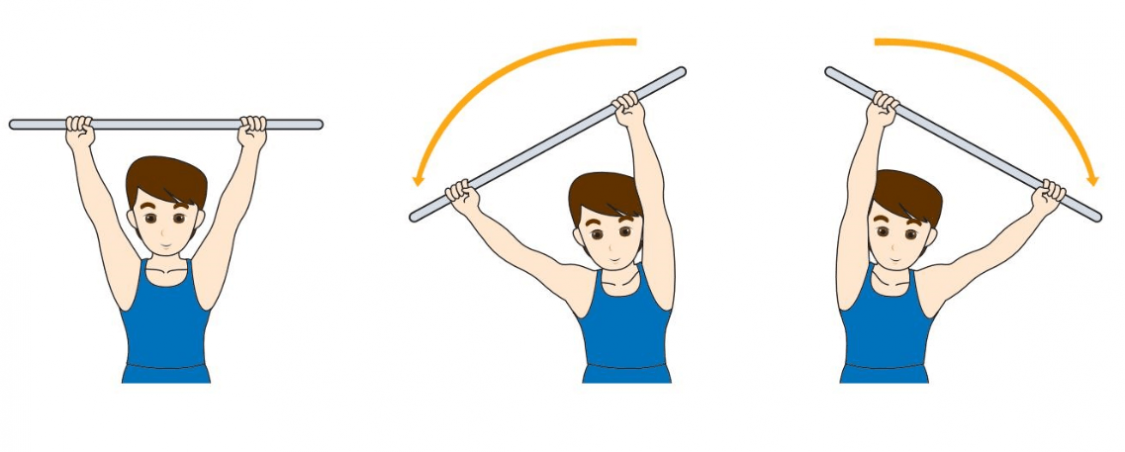
b. Move the bar right and left while you raise it up.

c. Hold the ends of the bar and swing it right and left. If you cannot reach the ends of the bar, widen your arms as much as possible
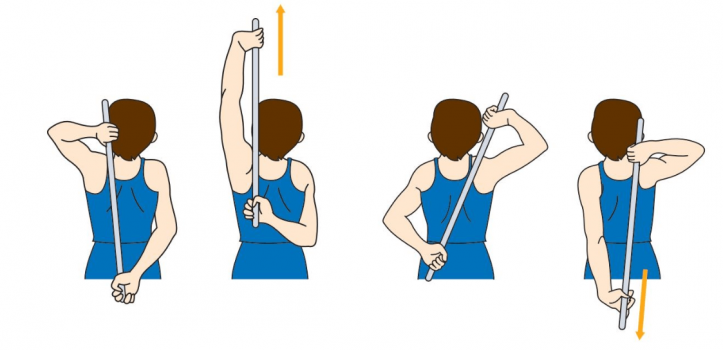
d. Like the figure. Turn your right hand down the back and hold the bar. Turn your left hand up and hold the bar. Rise the bar slowly. Then, hold it up with your right hand and down with your left one. Put down the bar slowly.
6. Exercise in a standing posture – Using a desk
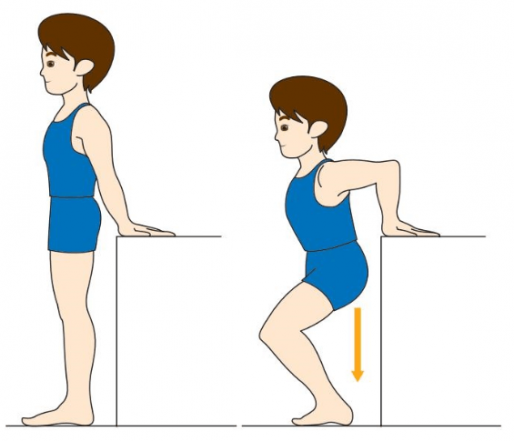
a. Turn back from a desk and put your hands on it. Crouch and sit slowly This will stretch the front muscles of your shoulders
7. Exercise in a lying posture – Twisting the shoulders
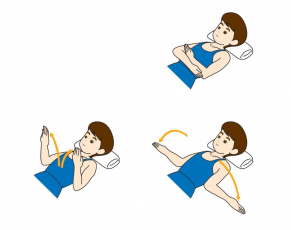
a. Bend your elbows to a right angle, and move the arms outwards slowly with the armpits attached to your body.

b. Bend your elbows to a right angle and open the armpits to a right angle too. If you cannot open the arms to a right angle due to pain, open the arms as much as you can. Move the arms upward (toward your head) slowly, and then downward slowly.
8. Exercise in a lying posture – Using a bar
*You can also use a towel for 01, 02, and 03
**Start the exercise slowly.

a. Unfold the elbows and lift up the bar from the abdomen upwards (toward your head) as much as possible. Return to the first position and repeat the exercise.
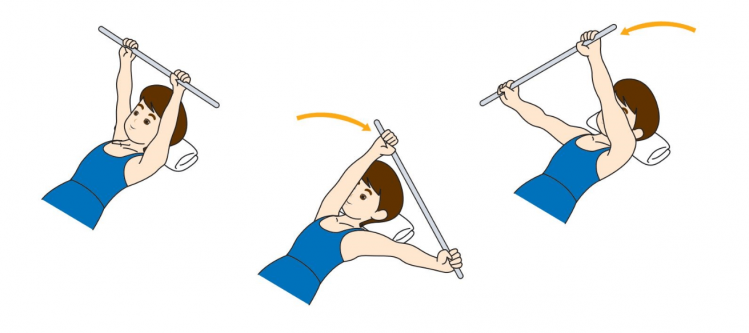
b. Lift up the arms perpendicularly and move to the left. Return to the first position and then move to the right. If you cannot lift up the arms perpendicularly, lift the arm as much as possible.
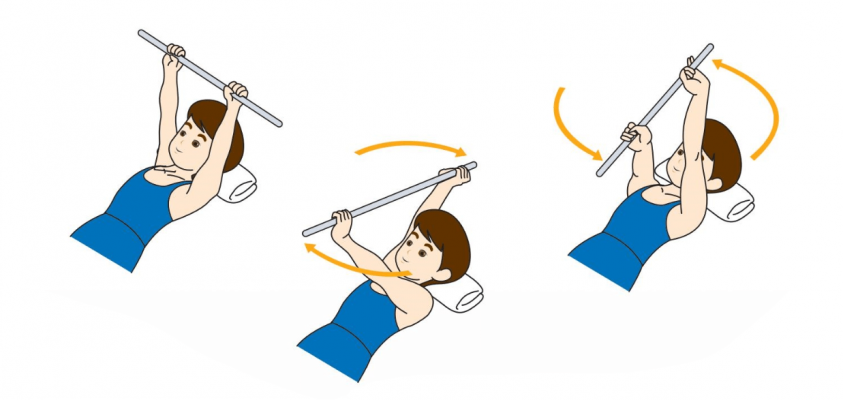
c. Stretch the arms perpendicularly and twist the bar right and left in turn
9. Others
- Move your joints slowly during exercise, as you may feel the pain due to the frozen shoulder during movement. You should be careful when you lift up the arms or twist them.

b. A hot bath before exercise is advisable as it would keep your shoulder warm and decrease the pain
- Move your joints slowly during exercise, as you may feel the pain due to the frozen shoulder during movement. You should be careful when you lift up the arms or twist them.

d. Take care not to let your shoulder gets cold at night, as frozen shoulder pain often increases during night.

e. Move your head and arms slowly at regular intervals as you may often feel rigid muscles in the shoulder and neck or pain in the arms due to the frozen shoulder.

f. It is recommended to consult a professional occasionally even though these exercises are useful to you.
What is Frozen Shoulder?
The shoulder joint is a joint with the largest moving range in the human body. “Frozen Shoulder” is known as “Omarthriitis” and “Fifty’s Shoulder” also as it is mostly seen in 40-50 years old age group.
As the characteristics of this disease, the moving range of the joint gets smaller, you may feel severe pain while performing your daily chores like hair-wash, clothe-wash, and during exercise.
Pharmacotheraphy, kinesitheraphy and hyperthermia etc. are used to treat the frozen shoulder. In some cases the disease gets recovers in a half year or a year without any treatment.
However, there are also the cases in which the symptoms get worse, making the shoulder unable to move at all.
It is important to treat the frozen shoulder on time in order to prevent further damage.
| Benefits of Exercise in Frozen Shoulder |
|
Exercise for frozen shoulder will help you to lift or twist the arms by reducing the pain, and facilitates various movement.
As all the exercises can be easily performed, it is important to remember it and practice continually at home or at work everyday.
| Take care of following points, when you exercise : |
|

